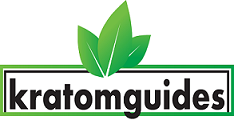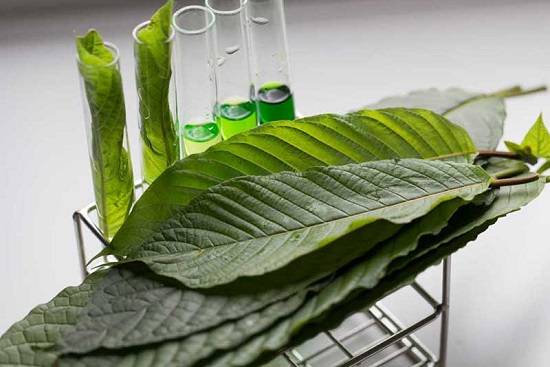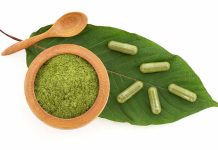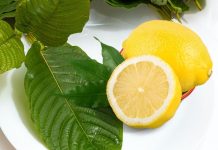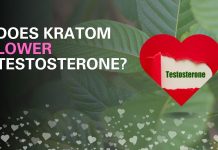One of the popular herbal remedies used as an alternative medicine for pain, Mitragyna speciosa – Kratom, is the evergreen tropical plant indigenous to Southeast Asia. Along with other components such as flavonoids, polyphenols, terpenoid saponins, and several glycosides, Kratom contains various alkaloids.
An alkaloid is one of the pharmacologically active constituents that contribute to Kratom’s therapeutic effects. The alkaloids in Kratom are important as they are the phytochemicals which form the active psychoactive components that make Kratom useful and popular among masses. They provide Kratom the medicinal properties it is known for such as sedation, relief from pain and cough, anti-malarial effects and relaxation.
In this article, we have got the list and the characteristics of Kratom alkaloids that contribute to its therapeutic benefits.
List Of Kratom Alkaloids And Their Characteristics
Kratom was reported to be the most extensively supplied new psychoactive substance by the European Monitoring Centre for Drugs and Drug Addiction (EMCDDA) in 2008 and 2011. Alkaloid content in Kratom varies according to the geographical location and the time of harvest. It also depends largely upon the type of Kratom strain.
According to research, there are more than 40 different alkaloids found in Kratom up till now, the major one being mitragynine.
1) Mitragynine: Antitussive, Adrenergic, Anti-malarial, Anti-depressive
Mitragynine is a hydrophobic indole alkaloid which marks roughly 66% of the total alkaloid content in Kratom. It has been found that mitragynine has a high affinity for mu-opioid receptors.
Thus, it is involved in responses similar to mu-opioid stimulation like mediating pain and depression. It also correlates to the fact that Kratom is effective in reducing opium addiction by decreasing the withdrawal symptoms. However, there is also a risk of its misuse potential that needs to be researched.
Research has shown mitragynine to induce mRNA and protein expression for some cytochrome (CYP) enzymes but the results are not clinically significant. This leads to the finding that concomitantly administering CYP modulating drugs such as carbamazepine, theophylline, digoxin, and warfarin will lead to a clinically significant drug interaction.
Alkaloid mitragynine is also found to directly inhibit the neurons in the lateral hypothalamus which explains its effect of anorexia and weight loss. The anti-depressive effects Kratom is known for are also reported to come mainly from mitragynine. It also possesses anti-malarial properties.
A 2018 study on humans stated that mitragynine does not weaken memory, motor function, and attention nor does it impair the executive function of regular Kratom users.
2) Paynantheine (PAY) – Stimulant, Smooth Muscle Relaxant, Potassium Channel Blocker
Paynantheine is an indole alkaloid which forms approximately 9% of Kratom alkaloids. It has opioid-like and stimulant effects. After Kratom intake paynantheine is reported to be found in urine.
PAY has been shown to restrain twitch contraction as well as inhibit the muscarine receptors on ileal smooth muscles thus, acting as a smooth muscle relaxer. It is suggested to have cardiotoxic properties due to its blocking effect on potassium current in stem cell-derived cardiomyocytes. Furthermore, a study has also reported paynantheine to be a weak antagonist of the mu-opioid receptor.
3) Speciogynine – Smooth Muscle Relaxant, Weak Mu-opioid Antagonist
Speciogynine is found to be 6.6% to 7% of the total alkaloid contents of Kratom. Speciogynine (SG), a diastereomer of Mitragynine is reported to be the third most abundant alkaloid in Kratom, first and second, being mitragynine and paynanthenine respectively. It is said to be structurally similar to opioids.
It also acts as a Smooth muscle relaxer by inhibiting twitch contraction in a naloxone-insensitive manner and inhibiting muscarine receptors in ileal smooth muscle. Additionally, it is suggested to have weak mu-opioid antagonist effect.
4) 7-Hydroxymitragynine (7-HMG): Anti-tussive, Stimulant, Potent Analgesic, Anti-diarrheal
7-HMG possesses the psychoactive properties found in Kratom. It marks approximately 2% of the total alkaloid content. It reinforces the effects of mitragynine partly by mu- and partly by delta-opioid receptors. It has been reported to have a five-fold greater affinity for mu-opioid receptors than mitragynine.
7-HMG is said to have a higher lipid affinity as compared to morphine making it easier to penetrate the blood-brain barrier. Thus, it has more potent analgesic activity. 7-HMG is also a potent anti-tussive. Although it exhibits an anti-diarrheal effect, it has been found to be less constipating than morphine.
5) Speciociliatine: Weak Opioid Agonist
Speciociliatine forms 0.8 – 1 % of alkaloid content in Kratom. It is the C3 stereoisomer of mitragynine.
Research shows that this alkaloid and its metabolites remain unidentified in human urine so far and there is a potential for them to be used as further markers of Kratom use. It inhibits twitch contraction. It is also found to hamper acetylcholine release from presynaptic nerve through ways other than stimulation of opioid receptors.
6) Mitragynine Oxindole B – More Potent Than Morphine, Less Addictive
It forms less than 1% of total alkaloid content found in Kratom. It is three folds more potent than morphine. It has also been found to cause less tolerance, respiratory depression and inhibition of gastrointestinal motility than equivalent doses of morphine. It also appears to lack addictiveness.
7) Ajmalicine – Cerebro-Circulant, Anti-aggregant, Anti-adrenergic (At Alpha-1), Sedative, Anti-convulsant, Smooth Muscle Relaxant
Ajamalicine is also known as Raubasine or δ-yohimbine. It is structurally similar to alkaloids from yohimbine. It acts as an antagonist of α1-adrenergic and α2-adrenergic receptors with a preferential α2 antagonism. This explains its antihypertensive effect.
The book Alkaloids: Biochemistry, Ecology, and Medical Applications elaborate that peripheral stores of nor-adrenaline are depleted by ajmalicine which results in a reduction of peripheral resistance that leads to lowering blood pressure.
It further reduces the catecholamine and serotonin stores in the brain, heart and other organs. It is also found in Rauwolfia serpentine and Catharanthus roseus.
8) Akuammigine: Stimulant, Analgesic, Anti-malarial
It forms less than 1% of the total alkaloid content of Kratom. It is an indole alkaloid and has opioid receptor agonistic effects. Thus, it has stimulatory and analgesic effects. It is also found in Picralima nitida (Akaumma) seeds. It is structurally related to mitragynine and yohimbine and has similar anti-malarial activity.
9) Ciliaphylline: Anti-tussive, Analgesic, Mild Sedative and Anti-diarrheal
It is an oxindole alkaloid. It forms less than 1% of total Kratom alkaloid content. It is present in the stem, trunk and root bark of the plant. It has analgesic and anti-tussive effects. It also has mild sedative and anti-diarrheal effects.
10) Corynantheidine: Anti-hypertensive, α1 and α-2 Adrenergic (α1 Preferentially)
Corynantheidine is also called as rauhimbine. It acts as a functional μ-opioid antagonist and is also found in Yohimbine. It is a diastereomer of yohimbine. It forms less than 1% of the total alkaloid content of Kratom.
It has α1-adrenergic and α2-adrenergic receptor antagonistic effects similar to ajmalicine but has a 10 times preferential affinity for α1 receptors.
11) Corynoxeine: Calcium Channel Blocker, Anti-locomotive, Anti-Parkinson’s Effect
Corynoxeine forms less than 1% of total alkaloid content found in Kratom. It acts as a Calcium channel blocker.
Corynoxine A – It is a dopamine mediator responsible for elevating mood and decreasing anxiety. It acts as an anti-locomotive.
Corynoxine B – An oxindole alkaloid. It acts as a dopamine mediator that enhances the effects of Corynoxine A. A study suggests that it can be used for prevention or treatment of Parkinson’s disease.
12) Epicatechin: Antioxidant, Anti-bacterial, Anti-diabetic, Anti-inflammatory
Epicatechin is a flavonoid which is a biologically active phenol that acts as an antioxidant providing various therapeutic benefits. A 2016 study has shown that epicatechin acts as an effective anti-bacterial agent.
According to the study, it acts against bacteria H. Pylori and provides protection against its infection. It has also been found that epicatechin improves insulin sensitivity and plays a role in alleviating insulin resistance associated with obesity, thereby acting as a natural remedy for diabetes.
It is further found to be an effective Anti-hepatitic agent. It works against the hepatitis C virus (HCV) and its relative diseases by inhibiting HCV replication. Epicatechin has also been established to have effective anti-inflammatory and anti-leukemic properties.
One study shows that it helps in reducing myostatin. This results in muscle growth and improved strength. It’s also found in green tea, dark chocolate, and grapes.
13) 9-Hydroxycorynantheidine: Partial Opioid Agonist
9-Hydroxycorynantheidine is chemically derived from mitragynine, but the reaction not as effective as mitragynine due to its effects were blocked by naloxone in a study conducted on guinea-pig ileum. From the study, it was concluded that 9-Hydroxycorynantheidine has partial agonist properties on opioid receptors in the brain.
14) Isomitraphylline: Immune-stimulant, Anti-leukemic
Isomitraphylline forms less than 1% of the alkaloid content of the Kratom plant. It is found in the stem, trunk bark, and root bark. One of Its effects is that it plays a role in immune system stimulation. Furthermore, it has some anti-leukemic properties.
15) Isomitrafoline: Auxiliary Immune-stimulant
Isomitrafoline makes up less than 1% of the alkaloid content in Kratom. Its structure is related to Isomitraphylline thus, acting as its auxiliary to stimulate the immune system.
16) Isopteropodine: Immune-stimulant, Anti-bacterial
Isopteropodine is one of the alkaloids which stimulate the immune system actively. It demonstrates a potential antibacterial activity by acting against Gram-positive bacteria. Its total alkaloid content is less than 1%.
17) Isospeciofoline: Analgesic, Anti-tussive
Isospeciofoline is a ‘C-9 hydroxy’ isomer of speciofoline. Its total alkaloid content in kratom is less than 1%. Its effects are considered to be similar to speciofoline having analgesic and anti-tussive properties however, more research is needed.
18) Mitraciliatine
Mitraciliatine is one of the indole alkaloids. It is found in leaves, stem, trunk and root barks of Kratom. Its total alkaloid content in Kratom is less than 1%. Studies have confirmed its presence in the urine of Kratom users.
19) Mitrafoline: Anti-hypertensive, Anti-amnesic, Anti-leukemic
Mitrafoline is an oxindole alkaloid. Its total alkaloid content in kratom is less than 1%. It is considered to cause vasodilation. Also, it exerts antihypertensive and anti-amnesic effects. It is said to have muscle-relaxing properties and is a potent anti-leukemic.
20) Mitraphylline
Mitraphylline is also an oxindole alkaloid involved in immune system stimulation. It is structurally comparable to ajmalicine. It acts as a Vasodilator and a muscle relaxant also has diuretic, anti-hypertensive, and anti-amnesic properties and plays a role in potential anti-leukemic characteristics Kratom possesses.
Also, it has shown to have immune-stimulating effects. Its total alkaloid content in kratom is less than 1%.
21) Mitraversine
Found in Mitragyna parvifolia and may also be present in Mitragyna speciosa. It was first isolated by Field et. al in 1921. Very little is known about the alkaloid and needs further research.
22) Rhynchophylline
Rhynchophylline is found in the stem, trunk and root barks of Kratom. It acts as a vasodilator and antihypertensive. It is a potent calcium channel blocker, also acts as anti-aggregant. It can also be used as an antipyretic to reduce fever and has anti-inflammatory activity.
It is further known to make Kratom effective as an anti-arrhythmic and provides an effective treatment of parasitic worms. It is a non-competitive NMDA antagonist and demonstrates its effects on dopamine and 5-HT receptors.
Also found in Chinese Cat’s claw (Uncaria tomentosa). Its chemical structure is correlated with mitragynine.
23) Isorhynchophylline
It is an isomer of rhyncophylline. It is found in leaves, stem, trunk bark and root bark of the kratom plant. It is an oxindole alkaloid, also found in Uncaria species. It is chemically associated with alkaloid mitragynine. It has anti-malarial properties.
It also acts against cardiovascular and central nervous system diseases such as hypertension, bradycardia, sedation, arrhythmia, amnesia and vascular dementia. It has potential anti-coagulant effects. It plays a role in blocking the calcium channels, having effects similar to verapamil. It acts as an immune-stimulant. Its total alkaloid content in kratom is less than 1%.
24) Speciofoline
Speciofoline is an oxindole alkaloid. It plays a role as a mild opioid receptor agonist. It is a potent orally effective analgesic and anti-tussive agent as demonstrated by animal experimentation.
25) Speciophylline
Speciophylline is an indole alkaloid also found in Chinese Cat’s claw (Uncaria tomentosa). It acts against blood cancer due to its anti-leukemic properties. Its total alkaloid content in kratom is less than 1%.
26) Stipulatine
It is an oxindole alkaloid that acts as a mild to moderate opioid receptor agonist. It also has sedative and antioxidant effects. Its total alkaloid content in kratom is less than 1%.
27) Tetrahydroalstonine
It acts as a Hypoglycemic i.e. lowers blood sugar level. It bears anti-adrenergic properties (at alpha-2) receptors. Its total alkaloid content in kratom is less than 1%.
The pain-relieving and relaxing effects of Kratom are sworn by its users. However, the Food and Drug Association U.S. has concerns regarding its safety and addiction.
Also, it has issued a warning against its risks in April 2019. Experts are concerned mainly about the two major Kratom alkaloids namely, mitragynine and 7-a-hydroxymitragynine. These alkaloids are present in high amounts in the Kratom plant and have the most potent effects on the brain.
According to Austin De La Cruz, Pharm.D., clinical assistant professor at Houston University, these alkaloids are most apprehensive because they work by binding to opioids receptors in the brain, particularly mu-opioid receptors that are involved in pain relief and potential euphoric effects. FDA supports more research to be conducted for a better understanding of Kratom and its safety including its effects in combination with other drugs.
